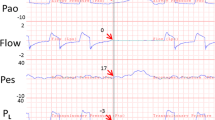Abstract
Edrophonium chloride is used frequently as a provocative agent in the assessment of noncardiac chest pain (NCCP). However, the optimum dose and most appropriate method of interpreting test results is controversial. We studied 150 consecutive NCCP patients and 50 age-matched controls who alternately received either 80 μg/kg or 10 mg intravenous bolus doses of edrophonium preceded by saline placebo injections. Distal esophageal pressures were measured before and after drug injection in response to ten 5-cc wet swallows. Following 10 mg of edrophonium, 33% of patients and 4% of controls reported chest pain, while 29% of patients and no controls receiving the 80 μg/kg dose complained of chest pain. Amplitude changes after either dose were not significantly different for all comparisons, but the duration of response did distinguish the two doses in patients with chest pain. A significantly greater (P=0.01) increase in distal contraction duration occurred after 10 mg (74±12%; ±se) compared to 80 μg/kg dose (43± 6%). However, individual responses to the two doses overlapped considerably. If a positive test is redefined to include both chest pain and manometric changes that are significantly different from controls, the positivity rate changes drastically; 33% to 9% in the 10- mg group and 30% to 3% in the 80- μg/kg group. Side effects were similar between doses, but there was a significant (P=0.02) linear relationship between intensity of side effects and the edrophonium dose per kilogram of body weight. From this study and a review of the literature, we conclude that either dose of edrophonium is appropriate for provocative testing but that the interpretation of results is dependent upon technique.
Similar content being viewed by others
References
Ward BW, Wu WC, Richter JE, Nackshaw BT, Castell DO: Long-term follow-up of symptomatic status of patients with non-cardiac chest pain: Is diagnosis of esophageal etiology helpful? Am J Gastroenterol 82:215–218, 1987
Richter JE, Castell DO: Esophageal disease as a cause of non-cardiac chest pain. Adv Intern Med 33:311–336, 1988
Benjamin SB, Richter JE, Cordova CM, Kuff TE, Castell DO: Prospective manometric evaluation with pharmacologic provocation of patients with suspected esophageal motility dysfunction. Gastroenterology 84:893–901, 1983
Hollis JB, Castell DO: Effects of cholinergic stimulation on human esophageal peristalsis. J Appl Physiol. 40:40–43, 1976
Richter JE, Hackshaw BT, Wu WC, Castell DO: Edrophonium: A useful provocative test for esophageal chest pain. Ann Intern Med 103:14–21, 1985
Lee CA, Reynolds JC, Ouyang A, Baker L, Cohen S: Esophageal chest pain: Diagnostic value of high-dose Tensilon provocative testing. Dig Dis Sci 32:682–688, 1987
Freidin N, Mittal R, McCallum RW: Is esophageal manometric recording during Tensilon test useful in noncardiac chest pain. Gastroenterology (Abstract 1395A), May 1987
Nasrallah SM, Hendrix EA: Comparison of hypertonic glucose to other provocative tests in patients with noncardiac chest pain. Am J Gastroenterology 82:406–409, 1987
Castell DO, Richter JE: Edrophonium testing for esophageal pain; concurrence and discord. Dig Dis Sci 32:897–899, 1987
Richter JE, Wu WC, Johns DN, Blackwell JN, Nelson JL, Castell JA, Castell DO: Esophageal manometry in 95 healthy adult volunteers: variability of pressures with age and frequency of “abnormal” contractions. Dig Dis Sci 32:583–592, 1987
Dodds WJ, Hogan WJ, Reid DP, Stewart ET: A comparison between primary esophageal peristalsis following wet and dry swallows. J Appl Physiol 35:851–857, 1973
Hollis JB, Castell DO: Effect of dry swallows and wet swallows of different volumes of esophageal peristalsis. J Appl Physiol 38:1161–1164, 1975
Barish CF, Castell DI, Richter JE: Graded esophageal balloon distention: A new provocative test for non-cardiac chest pain. Dig Dis Sci 31:1292–1298, 1986
Case WL, Smith JW: The intraesophageal balloon distention test in the diagnosis of esophageal chest pain. Gastroenterology 96:76A, 1989
Hewson EG, Dalton CB, Richter JE: Comparison of esophageal manometry, provocative testing and ambulatory monitoring in patients with unexplained chest pain. Dig Dis Sci 35:302–309, 1990
Vantrappen G, Janssen J, Ghillebert G: The irritable oesophagus—a frequent cause of angina-like pain. Lancet 1:1232–1234, 1987
Peters L, Maas L, Petty D, Dalton CB, Penner D, Wu W, Castell D, Richter J: Spontaneous non-cardiac chest pain. Evaluation by 24-hour ambulatory esophageal motility and pH monitoring. Gastroenterology 94:878–886, 1988
Author information
Authors and Affiliations
Rights and permissions
About this article
Cite this article
Dalton, C.B., Hewson, E.G., Castell, D.O. et al. Edrophonium provocative test in noncardiac chest pain. Digest Dis Sci 35, 1445–1451 (1990). https://doi.org/10.1007/BF01540560
Received:
Revised:
Accepted:
Issue Date:
DOI: https://doi.org/10.1007/BF01540560




